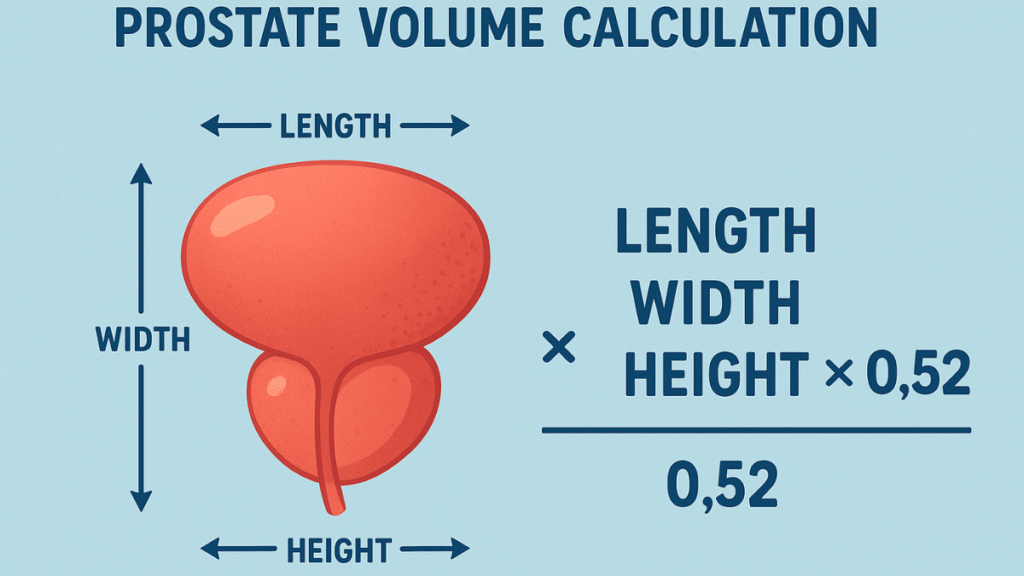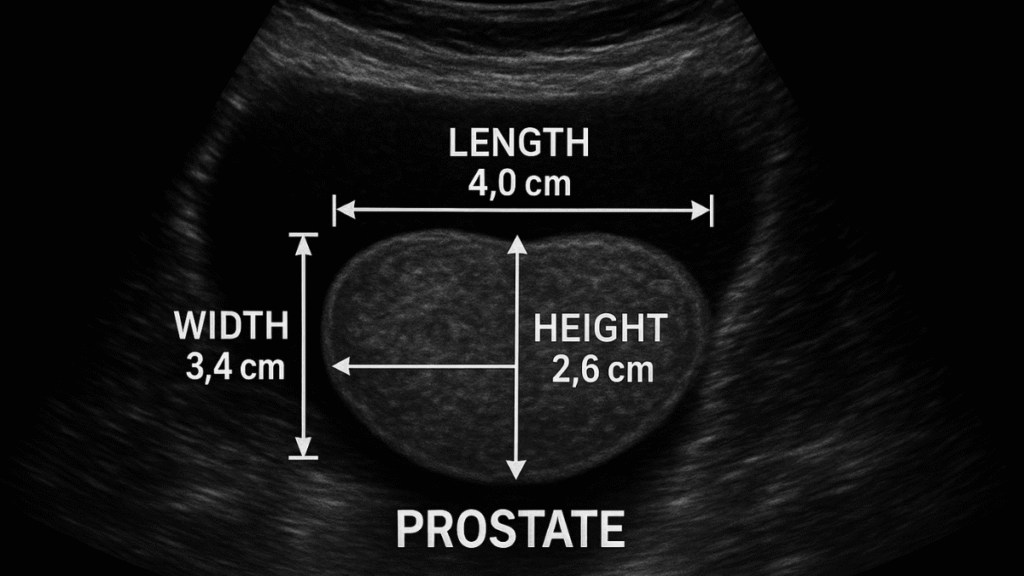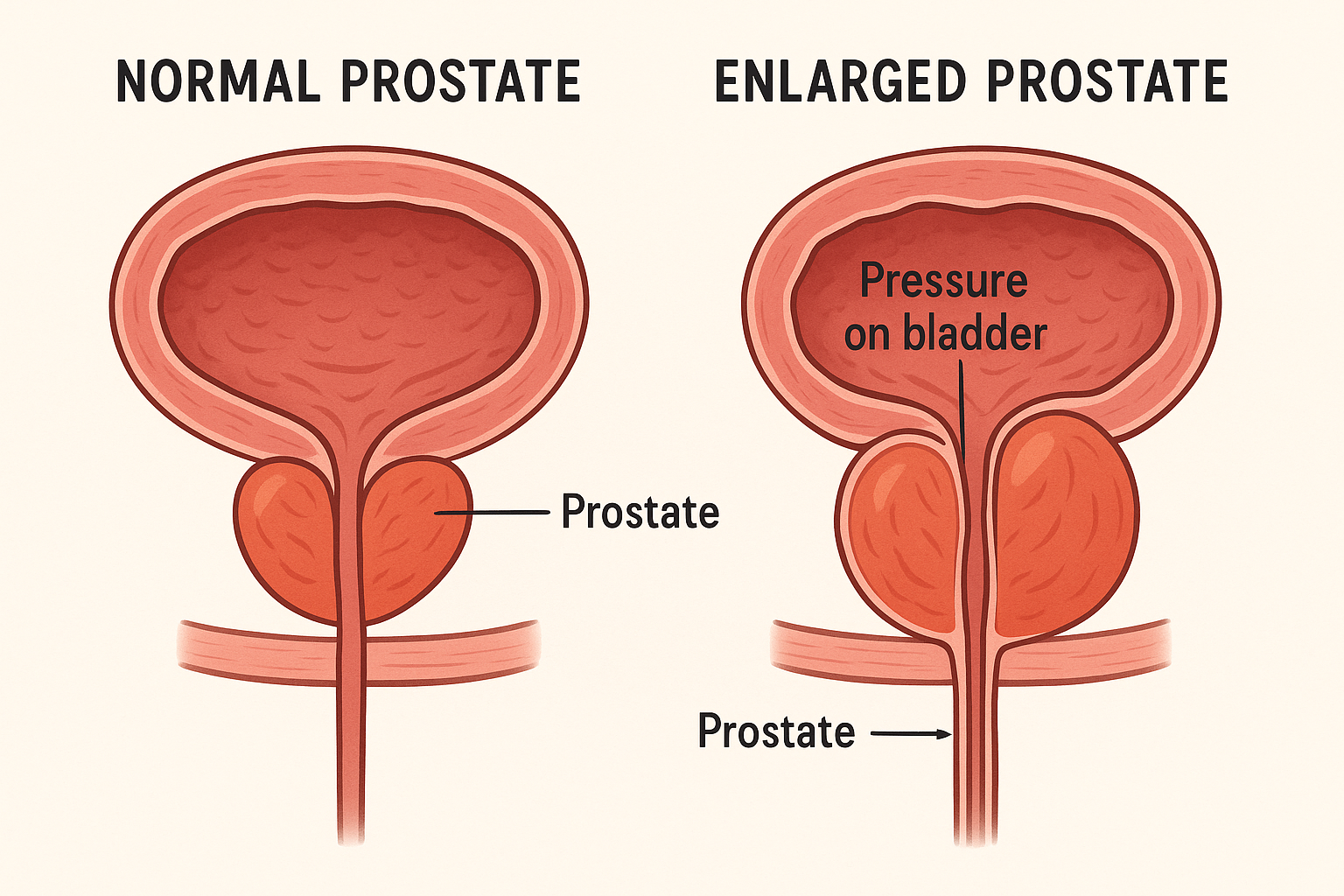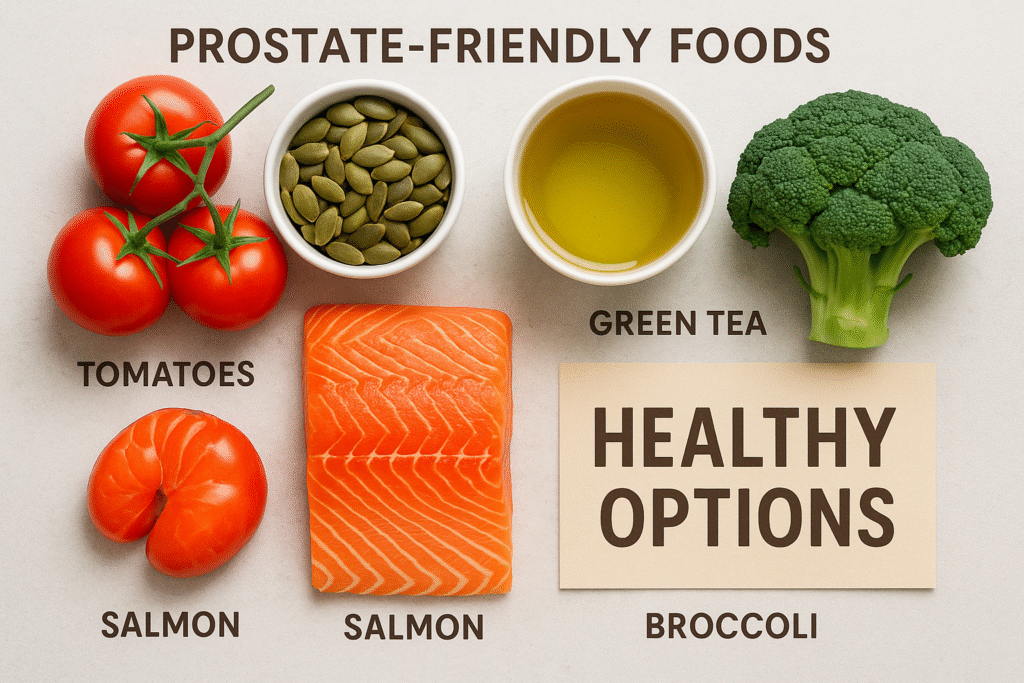Prostate Volume Calculator
What’s the Prostate Volume, and Why Does It Matter?
Prostate Volume refers to the bodily size of the prostate gland, normally measured in cubic centimeters (cc). Located just beneath the bladder, the prostate plays an important role in male reproductive fitness by producing seminal fluid. However, as men age, the prostate can grow, and sometimes cause soreness, urinary issues, or serious conditions like benign prostatic hyperplasia (BPH) or prostate cancer.
Knowledge of the Prostate Gland’s Position
The prostate surrounds a part of the urethra and enables in production and storage of seminal fluid. A healthy prostate contributes to fertility and the right urinary characteristics. But while it enlarges, it may press against the urethra, causing signs and symptoms including:
- Common or pressing urination
- Weak urine flow
- Trouble starting or stopping urine, go with the flow
What is the Prostate Volume Measured?
Medical doctors regularly assess prostate quantity at some stage in:
- Habitual checkups after age 40
- Screening for prostate cancer
- Evaluation of urinary signs and symptoms
- PSA (Prostate-specific Antigen) testing complies with
A bigger-than-ordinary prostate can signal the need for extra checking out or lifestyle adjustments.
Situations Connected to an Enlarged Prostate
An increase in prostate size isn’t always dangerous, but it could be a red flag for:
- Benign Prostatic Hyperplasia (BPH) – a noncancerous but uncomfortable growth
- Prostatitis – infection, often caused by infection
- Prostate cancer – a peculiar mobile boom that calls for early detection
In keeping with the Mayo medical institution, an enlarged prostate can cause bladder, urinary tract, or kidney problems if left untreated.
How to Calculate Prostate Volume (System Explained)

Calculating prostate volume is crucial for diagnosing and handling prostate-associated situations. The most commonly used and clinically accredited formula is based totally at the shape of the prostate, which is roughly ellipsoid.
Prostate Quantity Method

The standard system used by radiologists and urologists:
Prostate volume (cc) = period × Width × height × 0.fifty two
This formula is derived from the geometric quantity of an ellipsoid. All 3 dimensions (period, width, and height) are measured the use of transrectal ultrasound (TRUS) or MRI.
Instance Calculation
| Measurement | Value (in cm) |
| Length | 4.2 cm |
| Width | 3.5 cm |
| Height | 4.0 cm |
Calculation:
Prostate volume = four.2 × 3.five × four.0 × zero.52 = 30.6 cc
This patient’s prostate extent is 30.6 cubic centimeters, which is within the ordinary range for men.
Normal vs Enlarged Prostate Volume Ranges

| Age Group | Normal Volume (cc) | Enlarged Volume (cc) |
| 20–40 years | 15–25 cc | >30 cc |
| 40–60 years | 20–30 cc | >35 cc |
| 60+ years | 25–35 cc | >40 cc |
Source: PubMed Study on Prostate Measurement
Bonus Tip: gear That Automates Prostate volume Calculation
You can create or use online gear in which users just input duration, width, and height to get instant extent calculations — like this one you are constructing on EatLike.blog.
Symptoms that you may have an Enlarged Prostate
An enlarged prostate, medically known as benign prostatic hyperplasia (BPH), is commonplace amongst guys over 40. even as no longer cancerous, it can seriously affect your first-class of life if left unmanaged.
Recognizing the early signs allows you to take action before complications arise.
Common Signs of an Enlarged Prostate
If your prostate gland is growing, you may experience:
- Common urge to urinate, particularly at night (nocturia)
- Susceptible or interrupted urine movement
- Issue beginning urination
- Feeling like your bladder isn’t absolutely empty
- Dribbling at the end of urination
- Surprising urgency to urinate
Fact: According to the Cleveland health facility, approximately 50% of men elderly 51–60 have BPH signs and symptoms.
While to Peer at a Doctor
Even as moderate symptoms may be plausible with eating regimen and lifestyle modifications, seek advice from a urologist in case you observe:
- Blood in urine
- incapacity to urinate
- pain all through urination
- sudden, unexplained weight reduction
- Recurrent urinary tract infections (UTIs)
Seasoned Tip: Early prognosis and prostate quantity tracking help you keep away from surgical treatments later.
How Expansion is Identified
- Your healthcare company might also use several equipment to affirm BPH, which include:
- Virtual Rectal exam (DRE)
- PSA (Prostate-Specific Antigen) Blood check
- TRUS (Transrectal Ultrasound) – to measure prostate volume
- Uroflowmetry – to test the urine flow energy
- Submit a Void Residual (PVR) test to determine how much urine remains after urination
Top Lifestyle Changes to Reduce Prostate Size Clearly
If you’re experiencing early signs and symptoms of an enlarged prostate or want to keep most efficient state, small but consistent modifications to your lifestyle can make a large difference. While medication and surgical operation are alternatives in severe cases, many men see development through natural strategies.
1. Undertake a Prostate-friendly food regimen
A low-inflammatory, plant-rich weight-reduction plan supports prostate health. awareness on:
| Eat More Of… | Avoid or Limit… |
| Tomatoes (lycopene) | Red and processed meats |
| Broccoli, cauliflower, cabbage | High-fat dairy products |
| Salmon, flaxseeds (omega-3s) | Saturated fats and fried food |
| Green tea, turmeric (antioxidants) | Alcohol and excess caffeine |
| Pumpkin seeds, zinc-rich foods | Sugary beverages |
Did you already know? Lycopene in tomatoes may additionally help decrease the prostate cancer and reduce PSA levels. (supply: Harvard Health)
2. Exercising Often
Bodily activity helps lessen prostate quantity with the aid of improving hormone regulation, blood flow, and decreasing infection.
- Purpose for 30–45 minutes of slight aerobic exercise 5 days every week (taking walks, swimming, cycling).
- Encompass pelvic floor sporting activities (Kegels) to enhance urinary control.
3. Restriction: Alcohol, Smoking, and Caffeine
These substances aggravate the bladder and worsen BPH signs and symptoms:
- Alcohol will increase urine production and dehydrate you.
- Smoking reduces blood oxygenation and increases infection.
- Caffeine acts as a diuretic, increasing urgency and frequency.
4. Live Hydrated — The proper manner
Drink sufficient water; however, no longer in massive quantities earlier than bedtime. Avoid “maintaining” your urine for lengthy periods. Balanced hydration helps:
- Flush out pollutants
- maintain urinary tract healthful
- Save your bladder from overactivity
5. Manipulate Stress
Persistent strain can disrupt hormone levels like testosterone and DHT, contributing to prostate enlargement.
Try:
- Deep breathing exercises
- Meditation and mindfulness
- Yoga or Tai Chi
6. Preserve a Healthful Weight
Weight problems are connected with increased prostate volume and urinary problems. A BMI below 25 is right for most men.
Tip: Use our BMI reverse Calculator tool to discover your optimal weight goal.
Medical Treatments for Enlarged Prostate (BPH)
If way of life changes aren’t sufficient to alleviate symptoms, your healthcare provider can also endorse clinical or procedural remedy options. Those interventions intend to reduce the prostate, enhance urine flow, and prevent complications.
1. Medications for BPH
Here are the most common sorts of medicinal drugs used to treat an enlarged prostate:
| Drug Type | How It Works | Examples | Benefits |
| Alpha Blockers | Relaxes prostate and bladder muscles | Tamsulosin (Flomax), Alfuzosin | Fast symptom relief |
| 5-Alpha Reductase Inhibitors | Shrinks the prostate by lowering DHT | Finasteride (Proscar), Dutasteride | Reduces size over time |
| Combination Therapy | Combines both types | Tamsulosin + Dutasteride | Enhanced symptom and size control |
| Phosphodiesterase-5 Inhibitors | Improves blood flow and urinary function | Tadalafil (Cialis) | Dual benefit (BPH + ED treatment) |
Observe: always consult a urologist earlier than beginning or combining any medicinal drugs. A few can also have an effect on blood pressure or sexual function.
2. Minimally Invasive Processes
If medications don’t help or produce aspect effects, non-surgical tactics can be the next step:
Popular Alternatives Consist of:
- TURP (Transurethral Resection of the Prostate)
well-known and widely used. gets rid of excess prostate tissue through the urethra. - UroLift® machine
Lifts and holds enlarged tissue far from the urethra. No slicing worried. - Rezum™ Water Vapor therapy
Injects steam to cut back prostate tissue. Outpatient, no widespread anesthesia is needed. - Laser therapy
uses excessive-depth mild to smash extra tissue (e.g., GreenLight laser).
Those are frequently included using coverage and require much less downtime than a surgical procedure.
3. Surgical Procedure (For extreme cases)
If the prostate is significantly enlarged or complications arise (e.g., urinary retention, bladder stones), surgical remedy may be required:
- Simple prostatectomy: entire or partial elimination of the prostate.
- HoLEP (Holmium Laser Enucleation of the Prostate): Laser elimination of massive prostate tissue.
These procedures are effective, however involve longer recovery and a higher risk of aspect effects.
A Way to Select the Proper Remedy?
The elements to keep in mind consist of:
- Severity of signs
- Prostate volume (via ultrasound or MRI)
- Age and typical health
- Existing clinical conditions
- Reaction to beyond treatments
Seasoned Tip: Ask your urologist about prostate quantity calculations and request a baseline measurement to song remedy effectiveness.
A Way to Calculate Prostate Quantity At Home (Step-by-Step)
Understanding the dimensions of your prostate is vital for monitoring BPH development and figuring out the ideal treatment strategy. While genuine measurements ought to be accomplished through ultrasound by way of a urologist, the prostate volume may be expected the usage of a modern clinical formula based on dimensions obtained via imaging.
Prostate Extent Formulation (TRUS-based)
The ellipsoid method is most commonly used by medical doctors:
Prostate Volume (cc or mL) = Length × Width × Height × 0.52- Duration (L) = the front-to-lower back (anterior-posterior)
- Width (W) = side-to-facet (transverse)
- Top (H) = pinnacle-to-bottom (longitudinal)
The result is measured in cubic centimeters (cc) or milliliters (mL).
Example Calculation
Let’s say your doctor provides the following measurements from a transrectal ultrasound (TRUS):
- Length: 4.2 cm
- Width: 3.8 cm
- Height: 4.5 cm
Apply the formula:
Prostate Volume = 4.2 × 3.8 × 4.5 × 0.52 = 37.3 mLInterpretation:
A prostate volume of around 30–40 mL is commonplace in men over 50. Over forty mL may additionally indicate BPH (Benign Prostatic Hyperplasia).
Pleasant Ingredients to Decrease Enlarged Prostate Naturally

Eating regimen plays a significant role in preserving prostate health. Sure ingredients have hormone-regulating results, which could assist in shrinking the prostate and simplify urinary symptoms associated with BPH.
1. Tomatoes (rich in Lycopene)
Tomatoes incorporate lycopene, a powerful antioxidant that reduces prostate-specific antigen (PSA) levels and slows prostate growth.
- Exceptional shape: Cooked tomatoes (sauce, paste) boost lycopene absorption.
- Have a look at: An evaluation of most cancers & manipulation related high lycopene consumption with reduced prostate quantity.
2. Pumpkin Seeds
High in zinc, which helps hormone balance and decreases infection in prostate tissue.
- Consume 1–2 tablespoons each day, uncooked or roasted.
- Also available in oil form for supplementation.
3. Inexperienced Tea
Contains catechins that improve urinary flow, reduce inflammation, and can sluggish BPH development.
- Drink 1–2 cups in keeping with the day (unsweetened).
- Keep away from earlier than bedtime because of caffeine content.
4. Salmon & Fatty Fish
Wealthy in omega-three fatty acids that decrease systemic inflammation and improve urinary health.
- Devour 2 servings according to week (wild-stuck favored).
- Options: Sardines, mackerel, chia seeds, flaxseeds.
5. Cruciferous Veggies
Encompass broccoli, cauliflower, kale, and Brussels sprouts, known to combat oxidative stress and hormonal imbalances.
- Try to encompass 1–2 servings in keeping with the day.
- Best when steamed or lightly cooked.
Meals to Avoid for Prostate Health
| Avoid These | Why |
| Red & processed meats | Increases inflammation |
| High-fat dairy | May raise DHT hormone levels |
| Caffeine & alcohol | Irritated bladder, worsened urgency |
| Sugary foods | Increase insulin resistance |
| Highly processed snacks | Promote oxidative stress & BPH |
Tip: Observe a Mediterranean-style weight-reduction plan for the best prostate and metabolic health.
Professional Perception: What Urologists Say About Prostate Volume
“Prostate Volume is one of the key indicators we use to evaluate benign prostatic hyperplasia. A better volume can mean an improved chance of urinary obstruction, but it’s not the handiest factor. PSA stages and affected person signs are remembered simply as an awful lot.”
— Dr. Eric Wallace, Board-certified Urologist, Cleveland medical institution
Experts stress that extent by itself doesn’t determine remedy — it is the aggregate of length, symptoms, and risk factors like age, family history, and PSA traits.
Track, Measure, and Take Manage of Your Prostate Health
Know-how the way to calculate prostate quantity empowers you to music your health, stumble on problems early, and make informed decisions. By combining scientific steering with dietary and way of life changes, you could take control of prostate health certainly and appropriately.
- Use our Prostate Volume Calculator
- Undertake a prostate-pleasant food plan
- Stay lively with daily motion and pelvic sports
- Constantly follow up with your healthcare provider
Geared up to take the subsequent step? Bookmark this manual, try our calculator device, and live informed, due to the fact your health is well worth it.
FAQs
What is an Everyday Prostate Volume By Age?
Prostate volume varies with age. For men below 50, the average extent is around 20 to 30 cc. As guys age, it could clearly boom to 30 to forty five cc or more. An extent of over forty cc frequently shows benign prostatic hyperplasia (BPH).
Is Prostate Volume the Same as Prostate Size?
Yes, prostate volume refers to the general length of the prostate, calculated the use of three measurements: length, width, and height. These dimensions are elevated by way of a steady (usually 0.52) to get the whole volume.
Can I Calculate Prostate Volume At Home?
You can use the system when you have the measurements from an ultrasound:
Prostate Volume= period × Width × peak × 0.fifty two
But, those dimensions must be provided with the aid of a health practitioner or radiologist using imaging techniques — you can not measure them at home immediately.
Does Diet Help Lessen Prostate Volume?
Yes, adopting a prostate-friendly weight-reduction plan can help reduce infection and assist hormone stability, which may lessen prostate size over the years. Foods rich in lycopene, zinc, omega-3s, and antioxidants are mainly beneficial.

